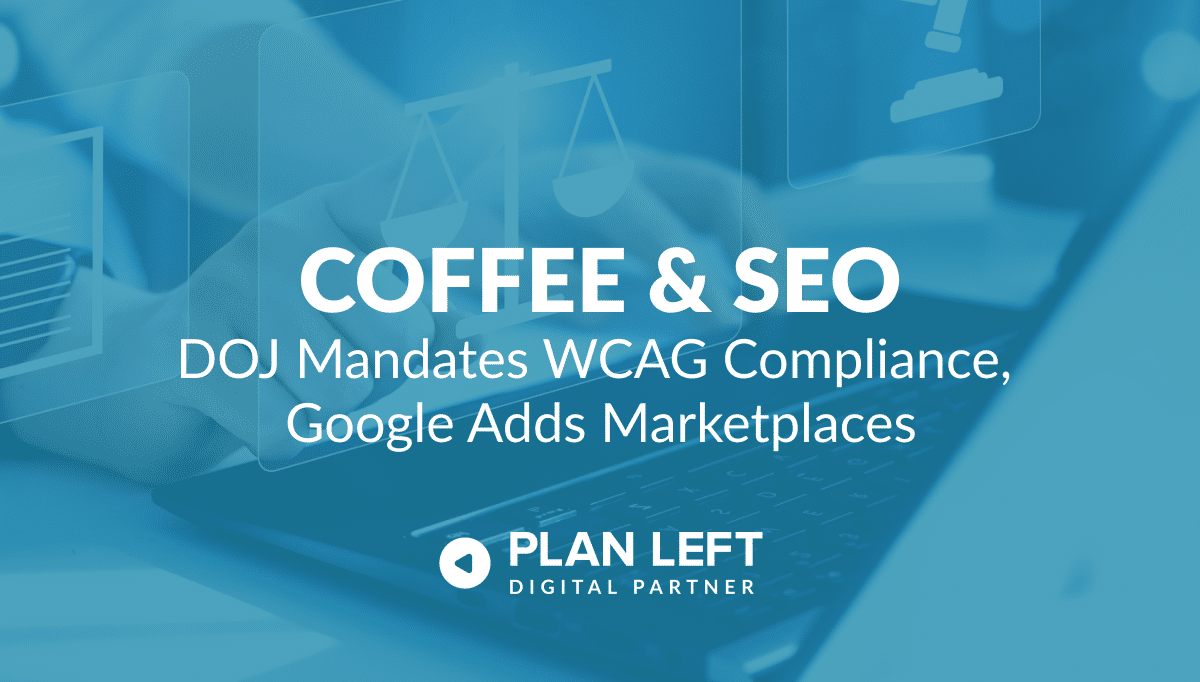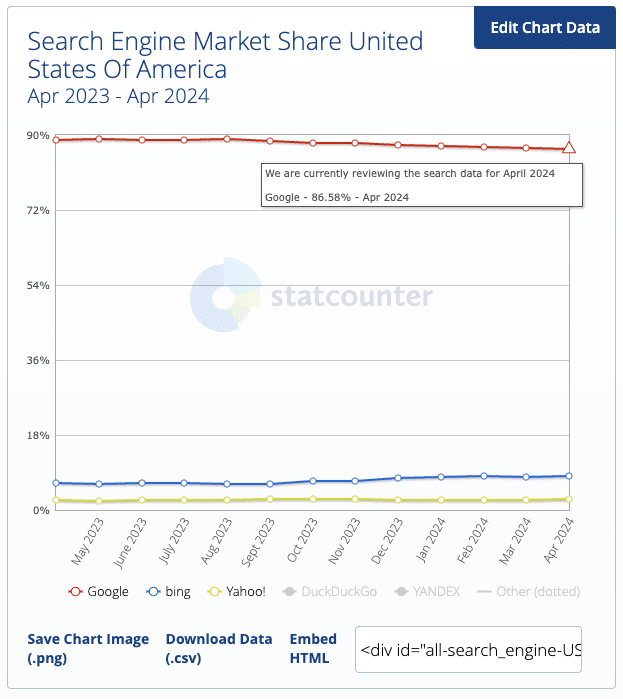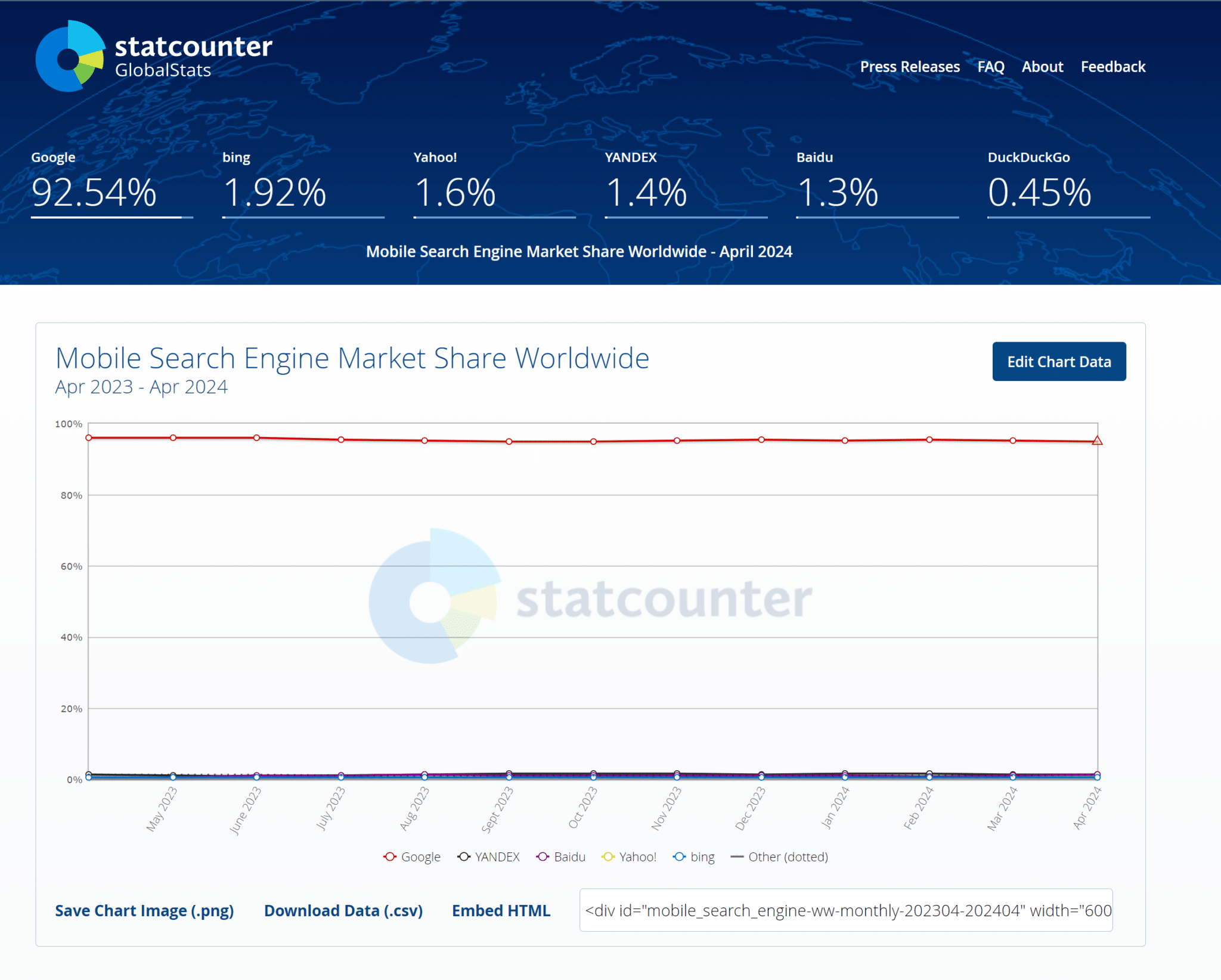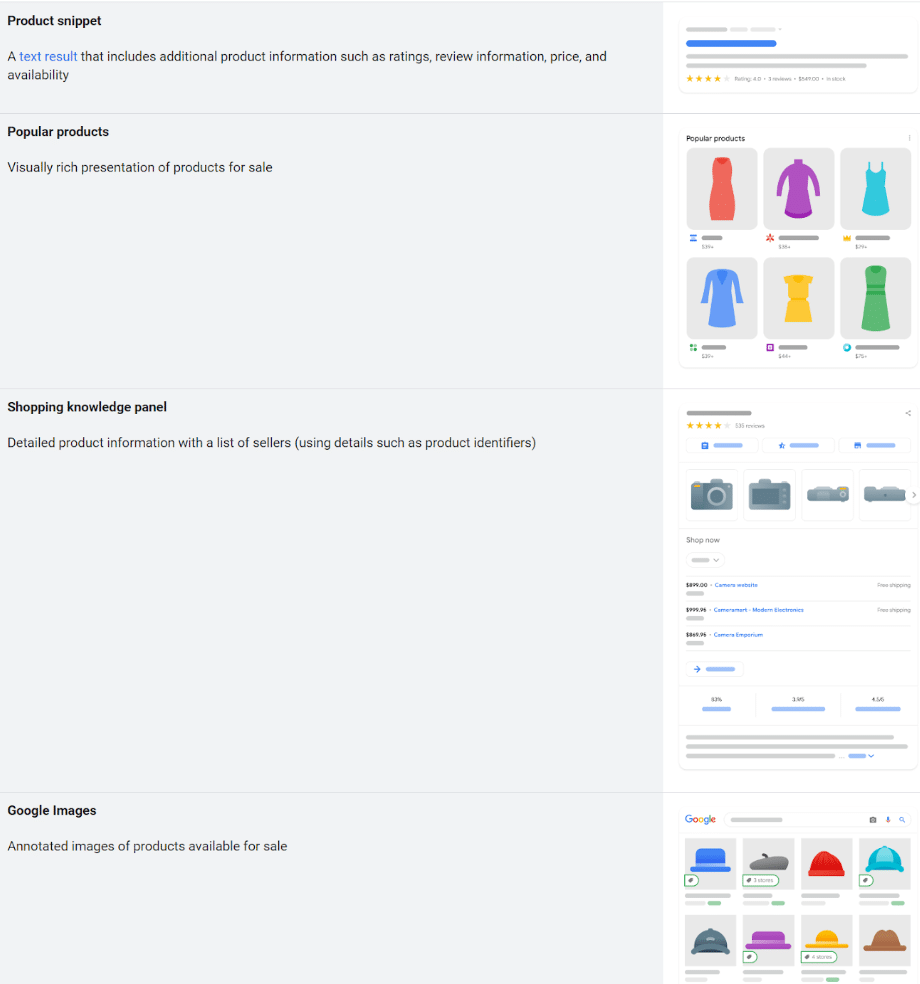
As we see in this week’s Coffee & SEO blog, even large data reporting platforms like StatCounter are fallible, and if you were holding out on website accessibility, now is the time to make sure your website is following WCAG guidelines. Let’s dive into this and more below.
Per DOJ State, Local & Federally Funded Websites Must Be WCAG
The Department of Justice (DOJ) has issued a ruling that mandates state, local, and federally funded websites to comply with the Web Content Accessibility Guidelines (WCAG) Version 2.1—both Levels A and AA—by April 24, 2026. This is a significant step in the DOJ’s long-standing efforts in website accessibility, an initiative that began back in 2010.
The rule goes beyond just state and local government websites. Entities that receive federal funding and are covered by Section 504 of the Rehabilitation Act, including most higher education institutions and healthcare providers, are expected to meet these same requirements as well. Additionally, Title III public accommodations, which include a variety of private sector businesses, should anticipate similar or even stricter regulations in the near future.
Exceptions to Archived Content
The goal is to provide access to the internet for all individuals, regardless of disability. The DOJ has acknowledged limited exceptions for archived web content and preexisting digital documents like:
- Preexisting Conventional Documents – This includes PDFs, word processing documents, presentation format documents, and spreadsheet file formats.
- Archived Web Content – Documents or media that were made before the April 26, 2025 deadline. These items are kept only for looking back, studying, or keeping records. They are not changed or updated once they are put into the archive and are kept in a special section clearly marked for archived materials.
- Content Posted by Third Parties – Third-party content that is present as a result of the government entity’s contracts, licenses, or other arrangements, then the content needs to be accessible.
- Individualized, Password-Protected, Conventional Documents – Although these documents may not be required to be accessible, they can be requested to be made so by individuals needing them provided in an accessible format.
- Preexisting Social Media Posts – All social media posts, including video and other content, must be made to conform to the WCAG standard after the compliance deadline. All social media before April 26, 2026, does not require accessibility updates.
The exceptions mentioned are only allowed when they do not impact access to the same level of service or information. For example, if a government website has old documents that people don’t often look at and aren’t important for the services they provide now, these documents might not have to follow the level AA website accessibility requirements for website access right away. This is because not being able to use these documents probably won’t really affect how well people with disabilities can use the important services on the website.
Legal Action Should Be Expected If Not Compliant
Title III public accommodations, which include a variety of private sector businesses, should anticipate similar or even stricter regulations in the near future. This expansion suggests that private sector websites will likely face increased legal inspection and need to comply with these accessibility standards.
Incorrect Reporting Showed Inaccurate Market Share Loss for Google
Statcounter incorrectly reported Google’s U.S. desktop search market share for the U.S. at 77.52% in April, down from 86.94% in March and 88.8% in April 2023. However, that has now been changed and is back up to 86.58%.
With the incorrect reporting for Google, Statcounter also showed incorrect reporting for Bing and Yahoo. Bing showed that it had increased to 13.05% in April, up from 8.04% in March, but now shows at 8.24%. Yahoo incorrectly reported a growth up to 7.3%, up from 2.48% in March, and now reports at 2.59%.
Source: Google’s Search Engine Market Share Drops As Competitors’ Grows [UPDATE], Search Engine Journal
Even though the loss in market share may not be as dramatic as originally (and incorrectly) reported by StatCounter, Google is losing users. Google has seen a steady loss of U.S. search market share since August 2023, when it was at 89.03%, which says a lot since the highest reported market share in the past 12 months was 89.1% in May 2023.
Mobile Market Share for Google Remains On Top With Smaller Losses
Something that was missed was that the incorrect reporting and traffic losses were for search on desktop market shares. If we look at mobile search market shares, they are still reporting a worldwide market share of 92.54% for the past 12 months.
Source: StatCounter
Google’s mobile market share has been declining slightly, from an average of 96.43% between February and April 2023 to 95.21% in 2024.
Consider A Holistic Approach to Optimization
The fact is, Google is dropping in users. If you are not doing so already, incorporating ranking best practices for all search engines should be considered. The most notable difference between Bing and Google is that Bing uses social media as a ranking factor. Integrating social search optimization would be a great place to start, and it is also another way to optimize your Google My Business profile now that your social media accounts can be linked and displayed.
Big Change to Google’s Product Structured Data Page
Google recently made a significant update to its Product Structured Data documentation, taking a page of over 6,000 words and dividing it into three distinct, topic-specific pages in an attempt to streamline the information and make it more accessible for users—particularly those in eCommerce. Note that structured data is crucial for these websites as it enhances their visibility in Google’s search results through rich listings, potentially driving more traffic and increasing earnings.
The original documentation has been condensed into an “Introduction to Product Structured Data” page, significantly reducing its word count from 4,808 to just 667 words. Despite this reduction, about half of the content remains the same, ensuring that essential information is still available. A new section titled “Deciding Which Markup to Use” guides users to the two additional pages created as part of the revamp.
These new pages are:
- Introduction To Product Structured Data – A primer on the basics of product structured data, explaining what structured data is, why it’s important for enhancing visibility in search engine results, and provides a general overview of the types of structured data that can be used for product listings.
- Product Snippet Structured Data – Focuses on the specific type of markup that enhances product pages where direct purchases aren’t possible. This includes pages that display product reviews, ratings, and other descriptive elements that help users make purchasing decisions without directly offering a sales option.
- Merchant Listing Structured Data – Strictly covers structured data for merchant listings, which is for pages where customers can directly purchase products, including more detailed product information such as sizes, colors, shipping details, and return policies, which are essential for transactional product pages.
Don’t Leave Out Any Details
Google specifically calls out leaving out any details related to returns, pros and cons of product, shipping, etc., since you don’t know when or what will be shown during the user experience. Instead, Google emphasizes including all the product details you have so that it is there to present to the user.
Watercooler Highlights
Marketplaces are popping up all over the internet, with big social media platforms like Facebook providing a massive buy and sell section on their platform. Google, which doesn’t like to miss out on anything, is now offering a downsized version of Google Performance Max, but it is only for marketplace sellers. In addition to that, Google’s John Mueller has come out saying that Google will eventually remove the disavow tool from Google Search Console.
Advertise Without A Website With Google Performance Max for Marketplaces
Google has rolled out a new advertising program, Performance Max for Marketplaces, designed for sellers on eCommerce platforms. The big news? You don’t need your own website or a Google Merchant Center account to participate. This initiative is all about helping sellers reach more customers and boost sales directly from the marketplaces where their products are listed.
Source: Plan Left Screengrab, Create a Performance Max for Marketplaces campaign
By linking your Google Ads account with a marketplace, you can create campaigns that direct shoppers straight to your products on platforms like Amazon.
Marketplace Shopping Comes to Google
This move by Google is a nod to online marketplaces’ increasing role in how people discover and buy products. It’s a game-changer for sellers already leveraging these platforms, offering them a way to tap into Google’s vast advertising network, including heavy hitters like Search, Shopping, YouTube, and Gmail.
Performance Max for Marketplaces vs. Performance Max Campaigns
It’s worth noting that Performance Max for Marketplaces comes with a few key differences from the standard Performance Max campaigns. For starters, there are no:
- URL expansion
- Automatically-created assets
- Video assets
- Cross-account conversion tracking
- New customer acquisition modeling
- Audience segmentation reporting
Despite these differences, the introduction of Performance Max for Marketplaces opens up Google’s advertising ecosystem to merchants operating on third-party platforms, eliminating the need for a standalone eCommerce presence. This could be a consideration, especially for smaller retailers looking to expand their reach and connect with more customers through Google’s network.
Google Will Remove Its Disavow Link Tool at Some Point
John Mueller, Google’s Search Advocate, said on Twitter (now known as X) that Google will remove the disavow link tool from Google Search Console “at some point.” Bing Webmaster Tools removed theirs in September 2023. This move aligns with previous feedback from Google regarding the deprecating value that links have on website rank—specifically, that it is not longer a top-ranking factor and that if you want to focus on something, focus on brand mentions.
Why Remove the Disavow Link Tool?
Long story short, Google says it hurts more than it helps. Google’s documentation on how to use the tool even states:
“This is an advanced feature and should only be used with caution. If used incorrectly, this feature can potentially harm your site’s performance in Google Search results.”
When Should I Disavow Links?
If you have paid for backlinks and have left the black hat SEO ways behind you, then yes, you should disavow those links before Google penalizes you for them. Another reason you may want to disavow links is that you’ve already received a manual action against your website and need to disavow the link(s) to remediate the manual action.
How Will I Be Able To Disavow Links Without Google Search Console?
If you’re looking to clean up your site’s backlink profile but can’t use Google Search Console, your initial approach should be to contact the owners of the sites linking to you and ask them to take down those links. Google gives this approach a thumbs up because it shows you’re making an effort to clean things up yourself, and who doesn’t love a paper trail to show you’re making an effort? If you receive a manual action, you have time and date-stamped email correspondence showing that you have made an effort to remove the toxic links.
Explore Latest Posts
The Hidden Cost of Marketing Agencies: Why Building In-House Capabilities Matters Marketing agencies solve an immediate problem: you need marketing ... read more
December 23, 2025
How to Know Exactly Which Marketing Activities Drive Results You're investing in marketing. Social media posts go out regularly. Email ... read more
December 18, 2025
The Entrepreneur's Guide to Creating a High-Ticket Flagship Offer Most businesses are built on a foundation of scattered services, multiple ... read more
December 16, 2025
Essential Strategies for Entrepreneurs
Get Actionable Business Insights & Marketing Tips
Our newsletter delivers real-world strategies from entrepreneurs who’ve been exactly where you are.
Sign up now for:
- Actionable growth strategies that work
- Insider tactics for attracting top talent
- Real-world case studies from successful founders
- Emerging tech trends that drive innovation
- Pragmatic marketing approaches for visionary leaders







